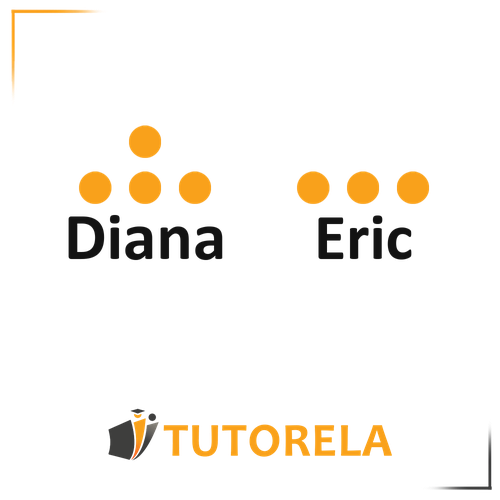A subtraction exercise is an exercise where we take away something from a certain amount.
When we see the sign we are shown that it's a subtraction exercise where we need to subtract something from a certain amount.
Subtraction Practice Problems: Visual Methods & Exercises
Master subtraction with step-by-step visual examples, vertical subtraction methods, and interactive practice problems. Learn basic subtraction facts and multi-digit techniques.
- Solve basic subtraction problems using visual counting methods with objects
- Master vertical subtraction technique for single and multi-digit numbers
- Apply subtraction skills to real-world word problems and scenarios
- Practice subtracting by counting backwards and using number lines
- Learn to break down two-digit subtraction using tens and ones
- Build confidence with step-by-step subtraction problem solving strategies
Understanding Subtraction
Subtraction
Let's look at an example –
Diana has orange balls

Eric took balls from Diana.

How many balls does Diana have left?
Let's look again at Diana's balls
We know that Eric took balls from her, so let's put aside the three balls that Eric took and count how many Diana has left.

Diana has balls left, therefore we obtain the following result:
Practice Subtraction
\( 79-57= \)
Examples with solutions for Subtraction
If we have 79 blocks in total, how many blocks will remain if we remove 2 tens and 3 ones?
Let's solve the problem step by step:
We begin with a total of blocks.
First, we need to determine how many blocks are removed:
- Two tens, which equals blocks.
- Three ones, equaling blocks.
Add the blocks removed together: blocks removed in total.
Now, subtract the total blocks removed from the starting total:
Therefore, the number of blocks remaining is .
Answer:
If we have 55 blocks in total, how many blocks will remain if we remove 5 tens and 4 ones?
To determine how many blocks remain, follow these steps:
- Step 1: Calculate how many blocks 5 tens represent: .
- Step 2: Add the 4 individual blocks being removed: .
- Step 3: Subtract the total removed blocks from the original number of blocks: .
After performing these calculations, we find that the number of blocks remaining is .
Therefore, the solution to the problem is .
Answer:
If we have 67 blocks in total, how many blocks will remain if we remove 5 tens and 4 ones?
To solve this problem, let's consider the following steps:
- Step 1: Understand the removal of blocks. We are removing 5 tens and 4 ones. One "ten" equals 10 units, so 5 tens equal units.
- Step 2: Calculate the total number of blocks to be removed. We have 50 (from tens) + 4 (ones) = 54 units to be removed.
- Step 3: Perform the subtraction from the total number of blocks. The total number of blocks is 67. Therefore, we calculate .
After performing the above calculations, we confirm that the number of blocks remaining is .
Answer:
If we have 85 blocks in total, how many blocks will remain if we remove 4 tens and 1 one?
To solve this problem, we begin by calculating the total number of blocks to remove.
Step 1: Calculate the blocks in 4 tens.
- A "ten" refers to 10 blocks. Thus, 4 tens equal blocks.
Step 2: Calculate the total blocks to remove by combining tens and ones.
- We are also removing 1 more block, so the total becomes blocks.
Step 3: Subtract the total removed blocks from the initial total to determine how many blocks remain.
- .
Therefore, the number of blocks remaining is .
Answer:
What number will we get if we subtract 2 tens and 5 units from the number 36.
To solve this problem, we begin by determining what needs to be subtracted from the number 36. We have "2 tens" and "5 units" to subtract:
- 2 tens is equal to 20 because one ten is equal to 10.
- 5 units are simply the number 5 added directly.
Therefore, the total amount to subtract is .
Next, we perform the subtraction operation:
Starting with the number 36, subtract 25:
After performing the subtraction, we conclude that the final result is:
.
Answer: